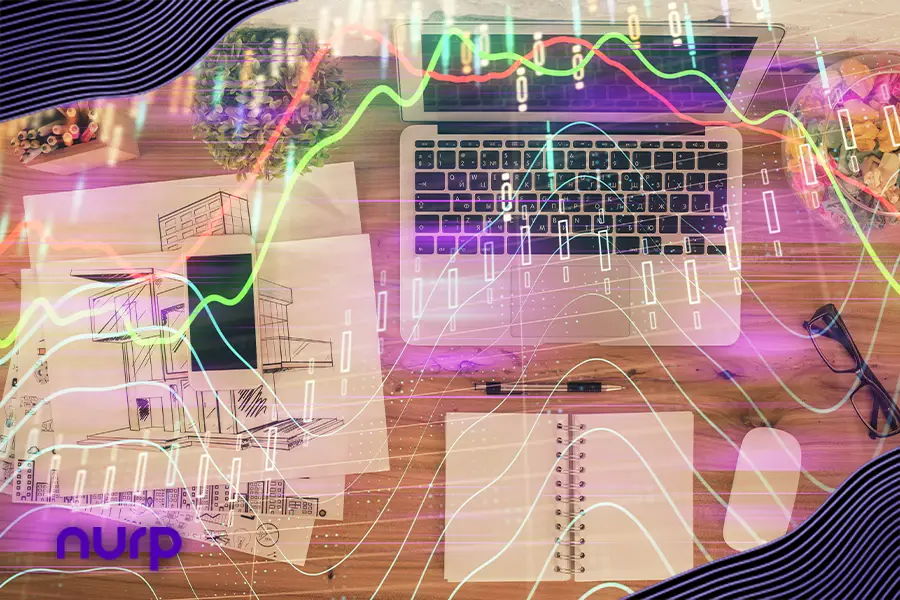Key takeaways:
High-frequency trading employs complex algorithms for quick trades, enhancing market efficiency but introducing fairness and stability risks.
Key challenges include market manipulation and investor access inequality, requiring stringent risk controls and regulatory oversight.
Ethical and systemic concerns demand transparent practices and mitigation strategies to address algorithmic biases and prevent disruptions.
Despite technology’s role, human expertise in managing algorithms and regulatory efforts is essential for adapting to changes and upholding trading ethics.
Introduction
High-frequency algorithmic trading is a fascinating aspect of the fast-moving financial markets. Picture a scenario where trades happen in microseconds, with computers processing huge amounts of data and making quick decisions. This world is driven by advanced technology and intricate algorithms that can significantly influence the financial industry. Join us as we delve into the inner workings, effects, regulatory hurdles, and future possibilities of high-frequency algorithmic trading.
The Mechanics of High-Frequency Algorithmic Trading
To understand high-frequency algorithmic trading, we must explore its intricate mechanics. It starts with gathering market data from different sources, such as stock exchanges, price quotes, and trade volumes. This data is then analyzed using advanced algorithms that identify patterns and generate trading signals.
Algorithmic strategies play a crucial role in this process. These strategies use various techniques, from simple moving averages to complex statistical models, to determine when and how to execute trades based on the analyzed data. Once a decision is made, orders are sent to the appropriate trading venues, like exchanges or alternative platforms, for execution.
The technologies supporting high-frequency algorithmic trading are equally impressive. Traders can position their servers near the exchange’s data center through co-location, reducing communication delays. Direct market access (DMA) allows traders to connect directly to trading venues, bypassing intermediaries and reducing latency.
Low-latency networks, consisting of high-speed fiber-optic cables, ensure fast data transmission between trading entities.
Real-world examples help demystify these complex concepts. For example, imagine a trader using algorithmic trading to exploit price differences between two exchanges. The algorithm quickly analyzes price data, identifies an opportunity, and executes trades within microseconds. This is the speed and scale at which high-frequency algorithmic trading operates.
Impact on Financial Markets
The impact of high-frequency algorithmic trading on financial markets is significant. One of its main benefits is the improvement of liquidity. Algorithmic traders continuously buy and sell securities, injecting liquidity into the markets. This makes it easier for participants to trade and reduces the difference between buying and selling prices.
Additionally, algorithmic trading helps with price discovery. These algorithms can quickly analyze large amounts of data and identify patterns and trends that may not be obvious to human traders. This helps establish fair and efficient prices for different assets.
However, algorithmic trading also brings challenges and potential drawbacks. Institutional investors may face a more competitive trading environment, which could reduce their profitability. On the other hand, retail traders may benefit from tighter bid-ask spreads and increased market efficiency. Market makers who provide liquidity also face opportunities and risks as algorithmic trading algorithms compete with their traditional role.
Case studies and historical events provide valuable insights into the impact of algorithmic trading on market dynamics. For example, the 2010 “Flash Crash” was a brief but severe market downturn partially caused by high-frequency trading algorithms. This incident emphasized the importance of having proper risk controls and monitoring systems to prevent extreme events.
Regulatory Challenges and Responses
Regulators are tasked with upholding market integrity and stability in the face of high-frequency algorithmic trading. They have implemented regulatory frameworks to tackle market manipulation, systemic instability, and unfair advantages. These regulations aim to create a fair and equal environment for all market participants.
It is important to assess the effectiveness of current regulations, considering the rapid advancements in algorithmic trading strategies and technologies. Ongoing discussions focus on matters of regulatory oversight and transparency. Regulators consistently work to balance promoting innovation and protecting market integrity.
Future Prospects and Emerging Trends
Prospects and emerging trends in high-frequency algorithmic trading are exciting and uncertain. Breakthroughs in artificial intelligence, machine learning, and quantum computing have the potential to revolutionize this industry. These technologies can improve algorithmic trading strategies, leading to faster and more advanced decision-making processes.
The structure of the market is also evolving. The emergence of decentralized finance (DeFi) and trading platforms based on blockchain technology introduce new possibilities for algorithmic trading. These platforms offer increased accessibility, transparency, and room for innovation, challenging the traditional centralized models.
Adapting to this rapidly changing environment is crucial for regulators and market participants. Collaboration among industry stakeholders and ongoing research are essential in predicting and addressing emerging risks. Regulatory diligence is necessary to safeguard the integrity and stability of modern trading ecosystems.
Ethical Considerations in High-Frequency Algorithmic Trading
As high-frequency algorithmic trading progresses, ethical concerns have become more prominent. The speed and sophistication of these trading strategies raise questions about fairness, market manipulation, and the impact on market stability. It is crucial to examine the ethical implications surrounding this practice.
One significant worry is the potential for market manipulation. The quick execution of trades can create artificial price movements or amplify existing trends, leading to market distortions. Regulators and market participants must collaborate to establish strong monitoring and surveillance systems to detect and prevent manipulative practices.
Another ethical consideration is the unequal access to information and resources. High-frequency algorithmic trading requires substantial financial and technological investments, which may create an uneven playing field. Smaller market participants with limited resources may find competing with larger firms with more sophisticated trading infrastructures challenging. Ensuring fair market access and promoting transparency are vital in addressing these disparities.
Furthermore, using advanced technologies like artificial intelligence and machine learning raises ethical questions. Algorithms trained on historical data may inherit biases or unintentionally make discriminatory decisions. Ethical guidelines and rigorous testing frameworks should be in place to prevent algorithmic biases and ensure that trading decisions are fair and unbiased.
Systemic Risks and Financial Stability
The rapid growth of high-frequency algorithmic trading has caused concerns about risks and stability in the financial system. These trading strategies, which are interconnected and fast, can make market movements bigger and contribute to market volatility.
One possible risk is the occurrence of sudden crashes or failures. Because financial markets are interconnected, a sudden drop in the price of one asset or market can start a chain reaction that disrupts the whole market. To reduce the impact of these events, regulators and market participants need to put safeguards in place, like circuit breakers or trading halts.
Additionally, relying on complex algorithms and technology risks technical problems or system failures. Even one algorithm malfunction or a network outage can have widespread consequences. Strong risk management practices, redundant systems, and regular stress testing are important to minimize the chance of catastrophic failures.
The global nature of financial markets also creates challenges for coordinating regulations. High-frequency algorithmic trading requires cross-border collaboration to address regulatory loopholes and ensure consistent oversight. International regulatory bodies must collaborate to establish common standards and mechanisms for sharing information and cooperation.
The Human Element in Algorithmic Trading
High-frequency algorithmic trading relies heavily on pre-determined but sophisticated strategies, but the human element is still crucial. Traders and market participants are vital in designing, monitoring, and managing these algorithms. Their expertise and market insights help create and adjust algorithms to adapt to changing market conditions. Human oversight ensures algorithms align with objectives and ethical standards.
Moreover, human judgment is essential during market stress or unexpected events. Algorithms may struggle to interpret unforeseen circumstances accurately, like geopolitical events or natural disasters. Traders must step in and make informed decisions to mitigate risks and maintain market stability.
Furthermore, regulators play a significant role in overseeing algorithmic trading. They provide oversight and enforce regulations to ensure fair and transparent markets. Regulators need expertise to understand the complexities of algorithmic trading and adapt rules accordingly.
Conclusion
High-frequency algorithmic trading has transformed financial markets, introducing unprecedented speed and scale. Its impact on liquidity, price discovery, and market dynamics should be considered. As we navigate this ever-evolving landscape, ongoing research, collaboration, and regulatory vigilance are crucial to ensure the integrity and stability of modern trading ecosystems.
High-frequency algorithmic trading has brought benefits and challenges to market participants, and its influence continues to shape the financial world. We gain valuable insights into this captivating realm by understanding its mechanics, impact, regulatory challenges, and prospects.
As technology advances and market structures evolve, regulators, traders, and investors must stay attentive, adaptable, and committed to fostering a fair and transparent trading environment. By doing so, we can navigate the exciting possibilities and potential disruptions that lie ahead in the realm of high-frequency algorithmic trading.
If you want to learn how we decode the market using a time-tested and sophisticated trading algorithm that 2,600 high-income earners use weekly, read this case study. It will show you the strategies used to outperform the market.
The post In the Blink of a Trade: Decoding High-Frequency Trading first appeared on Nurp.com.








